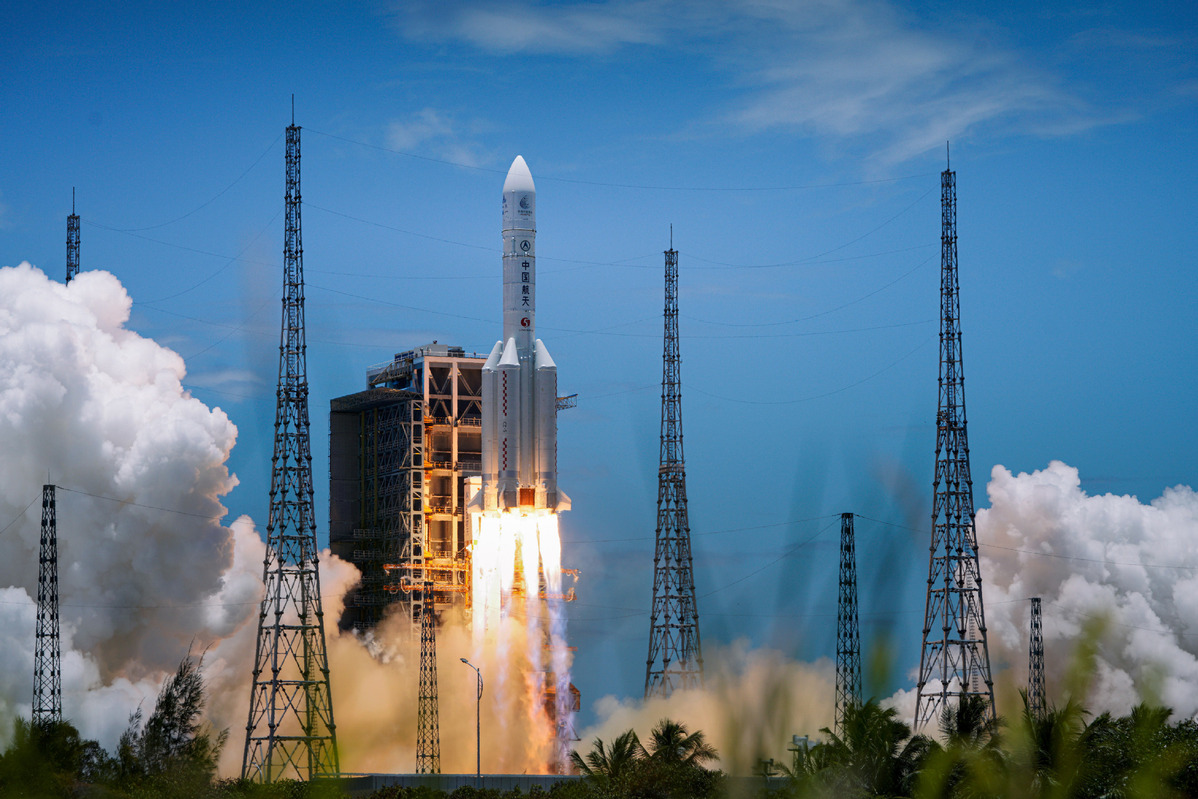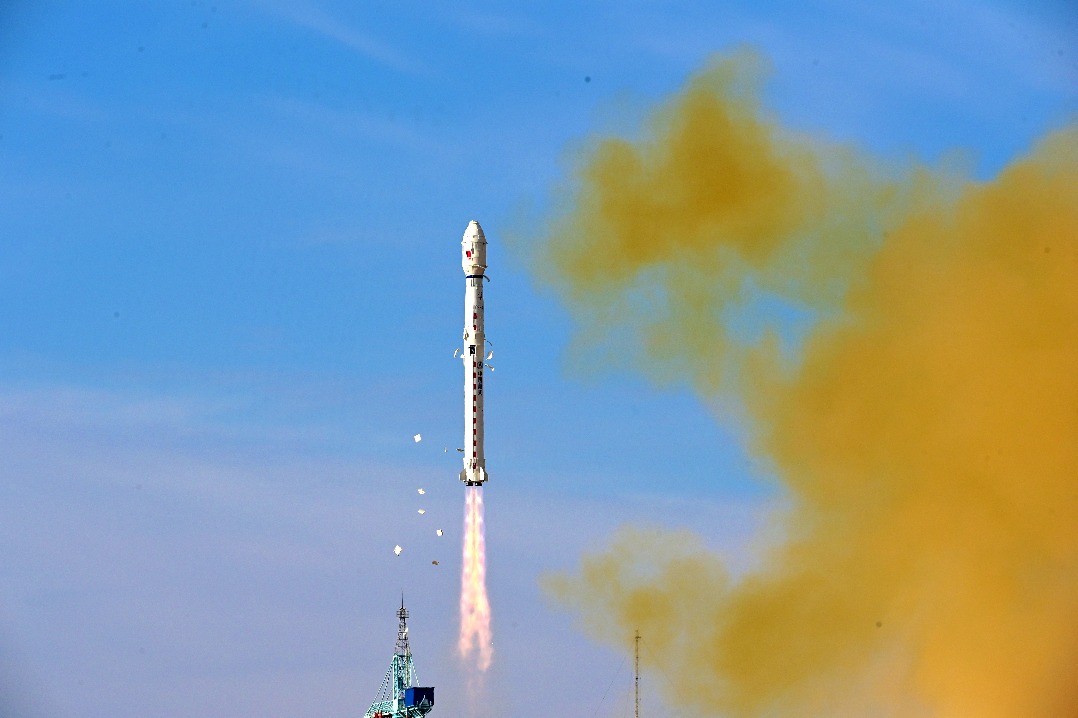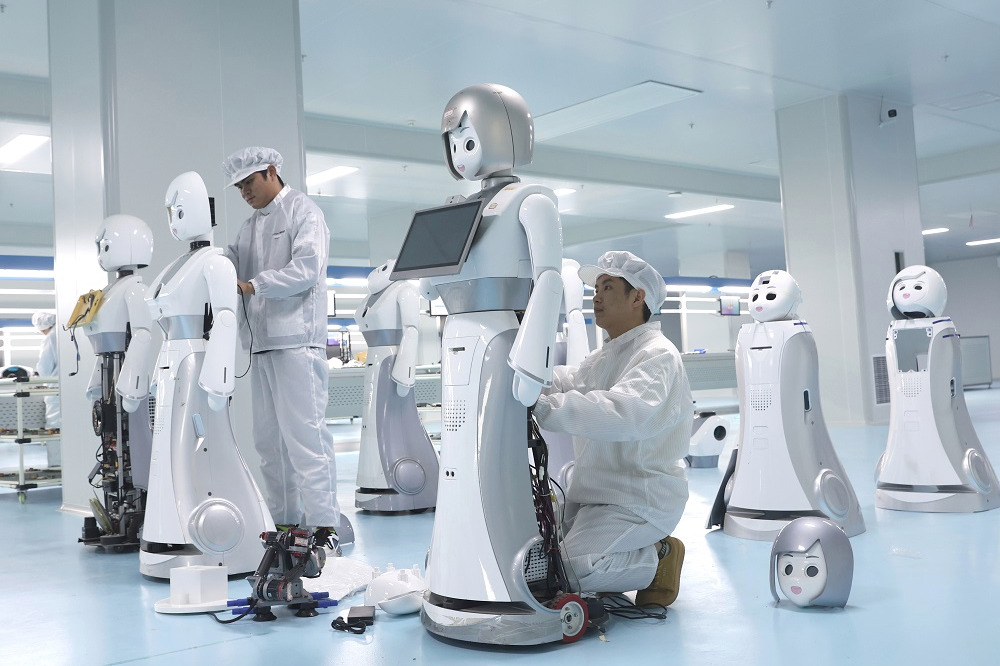Launch activity to accelerate


Space station missions the highlight of Long March schedule for 2021
China Aerospace Science and Technology Corp, the country's leading space contractor, says it plans to launch more than 40 missions this year, including some for the nation's space station program.
In a report read at the State-owned conglomerate's annual space programs meeting on Monday in Beijing, the company said the most important missions in 2021 will be sending the space station's major components, cargo craft and astronauts to assemble the multimodule station.
It said that if everything goes according to plan, 2021 will be its busiest year in terms of launch activity.
CASC sources said all of the 40-odd planned missions will be carried out by the conglomerate's Long March-series rockets, the nation's backbone rocket fleet, and do not include those to be made by the company's newly developed Smart Dragon solid-propellant rockets.
That means the number of missions launched by the company this year will be even bigger.
In 2020, CASC conducted 34 rocket flights, including three by Long March 5-series rockets that carried into space the prototype of China's next-generation manned spacecraft, the country's first independent Mars probe and the landmark Chang'e 5 lunar sample-return mission.
Sources with knowledge of CASC's annual schedules said on Tuesday that the most crucial missions this year will be one Long March 5B flight this spring tasked with transporting the core capsule of China's space station into a low-Earth orbit, two manned missions for astronauts to prepare the core capsule for other components and two by robotic cargo craft to ferry supplies to the capsule.
The China Manned Space Agency has revealed that the core capsule, Tianhe, or Harmony of Heavens, will have three parts-a connecting section, a life-support and control section and a resources section. It will be equipped with three docking hatches reserved for visiting manned or cargo spacecraft, and two berthing locations used to connect with space laboratories. There will also be a hatch for astronauts' extravehicular activities.
The module will be 16.6 meters long with a diameter of 4.2 meters. It will be central to the space station's operations, given that astronauts will live there and control the entire station from inside it. The module will also be capable of hosting scientific experiments.
The multimodule Chinese space station-called Tiangong, or Heavenly Palace-is expected to become fully operational around 2022. It will be mainly composed of three components, a core capsule and two space labs, with a combined weight of more than 90 metric tons.
China launched 39 carrier rockets last year, four of which failed to transport their payloads into space.
In 2018 and 2019 China was the world's most frequent user of carrier rockets.
In 2018, it made 39 orbital launches, equaling the number of space missions launched by China in the entire 1990s. It had 32 successful orbital launches in 2019 and two failures.



































